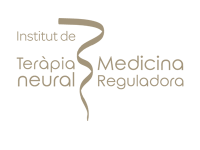
12 Minutes
CONTENTS
The human brain has the intrinsic capability to adapt to a variety of biochemical situations and neuronal activities depending on the psychosomatic state of the body. A certain type of brainwave function may be prominent during a specific activity, and the others might still be operating, though at a much lower level. A multitude of circumstances may cause the brain to become deregulated, and a dysfunctional brain may be overly active when it should be relaxed or poorly stimulated when it should be more active for higher cognitive functions. Our brain has the ability to rearrange itself and establish new connections in response to our life experiences, attitude, emotions, reactions, and behavior and to further evolve as we learn, discover, develop and grow.
This attribute of the brain is Neuroplasticity, a kind of “muscle building” aspect of our brain that strengthens and develops neural connections in response to repeated thoughts and actions. When the brain learns to escape inharmonious brain activity patterns that cause a particular mental health disorder like anxiety or drives away negative thought processes like impulsivity, it breakdowns the cycle that leads to unhealthy reactions and damaging emotions.
Although the brain has an in-built correction protocol for dysfunctional biochemical processes, sometimes if remedial intervention is not sought, the aberrant brain activity might cross the threshold and cause a mental upset. A simple, convenient, safe, and noninvasive therapy like Neurofeedback can benefit patients of varying ages in overcoming the harmful brainwave patterns that give rise to challenging behaviors, feelings, and thoughts. It may provide help in a variety of psychological conditions ranging from a tension headache, urinary incontinence, migraine headache, high blood pressure, chronic pain, temporomandibular and attentional disorders.

FAQs
A UNIQUE METHOD TREATING Therapies
a successful and proven concept focusing on underlying causesTherapies TREATMENT LASTING APPROACH
0 Before
Send Admission Request
0 Before
Define Treatment Goals
1 week
Assessments & Detox
1-4 week
Psychological & Holistic Therapy
4 week
Family Therapy
5-8 week
Aftercare
12+ week
Refresher Visit
Therapies Insights
latest news & research on Therapies
What Is Cognitive Behavioral Therapy?
Cognitive Behavioral Therapy (CBT) is a form of psychological treatment that effectively addresses a variety of mental health issues
read more


































































